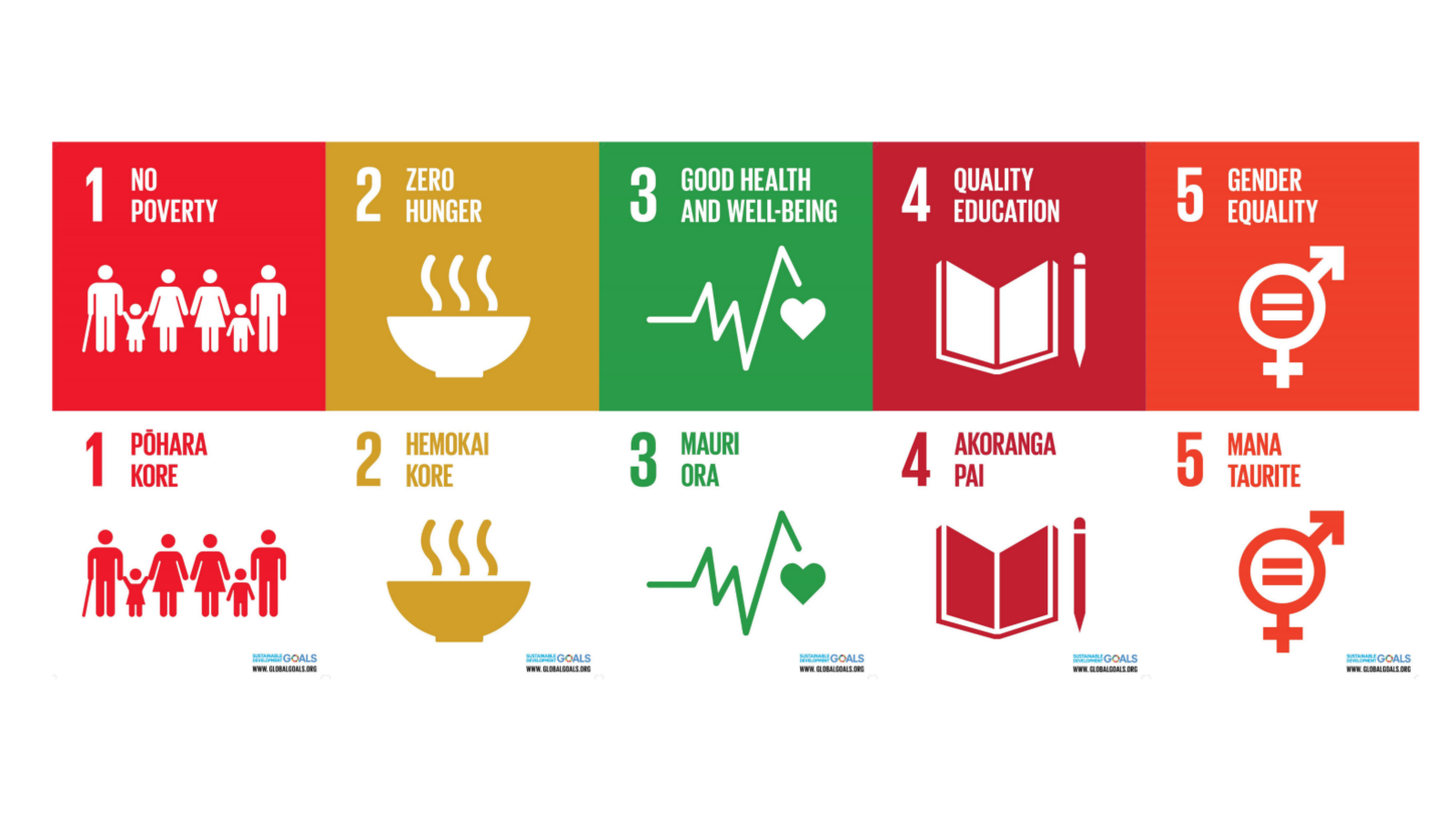Translation of the United Nations’ Sustainable Development Goals into te reo Māori a world first
The United Nations’ Sustainable Development Goals (SDGs) are now available in te reo Māori, thanks to staff of Victoria University of Wellington.

“The act of translating the SDGs affords a contextual lens through which we can navigate our progression to a more sustainable future together as New Zealanders,” says Tonya Sweet, Senior Lecturer in Design for Social Innovation at the University’s School of Design.
The United Nations describes the SDGs as the blueprint to achieve a better and more sustainable future for all. The 17 goals address global challenges from poverty and hunger, through to education, sustainable innovation, climate action, and just elections.
An inter-disciplinary team from Victoria University of Wellington has translated them into te reo Māori, and paired this translation with the SDGs in English in the form of colourful posters, which are now on display at the University’s three campuses—Kelburn, Pipitea and Te Aro.
“The parallel events of Toitū te Ao—Sustainability Week and Te Wiki o te reo Māori taking place this week offered a unique opportunity to raise awareness about the UN’s Sustainable Development Goals,” Ms Sweet says.
“We are hopeful that the posters will inspire the University community to act locally in addressing these global challenges.”
The group knows of 33 other language versions of the SDGs, and Assistant Vice-Chancellor (Mātauranga Māori) Associate Professor Meegan Hall is glad to now add te reo Māori to the list in this world first. “We’d like to see a reo Māori version of everything.”
Ms Sweet says, “Seeing the SDGs translated into te reo I am inspired by a new sense of identity and place-based point of orientation in addressing these goals. The translation has a telescoping effect, in which the enormity of these global goals has been transformed to fit within a New Zealand context.”
Associate Professor Hall says three staff from the Office of the Deputy Vice-Chancellor (Māori) worked on the draft translations before they underwent external quality assurance. “We took the approach of using simple words or phrasing, where possible. We wanted them to be understandable, even for people just beginning their reo Māori journeys,” she says.
“Some of the Māori phrasing is broader than the English equivalent, particularly in the case of the SDGs about different aspects of equality. However, we also knew that the reo Māori version would have clear graphics and be displayed alongside the English, adding clarity if there was any confusion for readers.”
The posters can be viewed all week in the Hub on the Kelburn campus, on the mezzanine of Rutherford House on the Pipitea campus, and in the atrium of the Faculty of Architecture and Design in Vivian Street.
The translation to te reo Māori will be included in the United Nations’ online collection in October. They will also be available as PDFs to download via the Sustainability Office and the University’s Māori at Victoria web pages.
Here are the translations:
- No poverty—Pōhara Kore
- Zero hunger—Hemokai Kore
- Good health and wellbeing—Mauri Ora
- Quality education—Akoranga Pai
- Gender equality—Mana Taurite
- Clean water and sanitation—Waiwhakaora
- Affordable and clean energy—Pūngao Pai
- Decent work and economic growth—Whai rawa
- Industry, innovation, and infrastructure—Hanga pai
- Reduced inequalities—Mana ōrite
- Sustainable cities and communities—Hapori ora
- Responsible consumption and production—Mahi tika
- Climate action—Hiwa āhuarangi
- Life below water—Oranga moana
- Life on land—Oranga whenua
- Peace, justice, and strong institutions—Hohou rongo
- Partnerships for the goals—Mahi tahi
